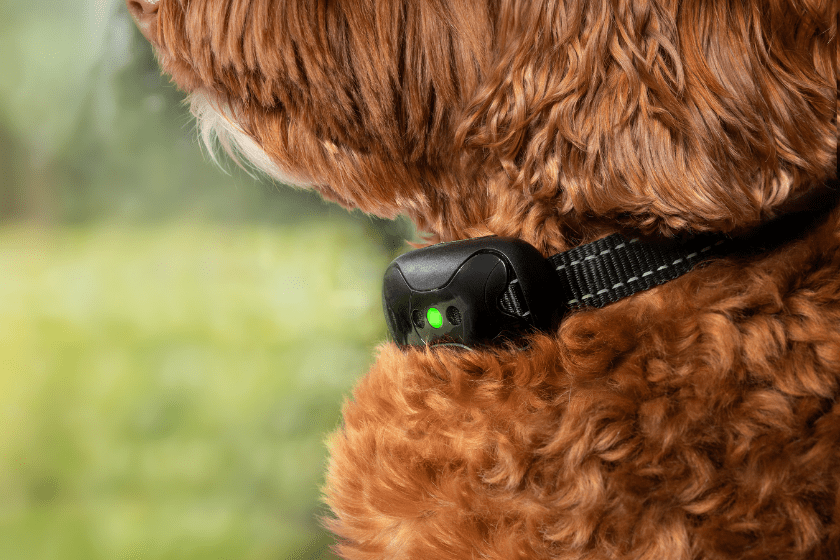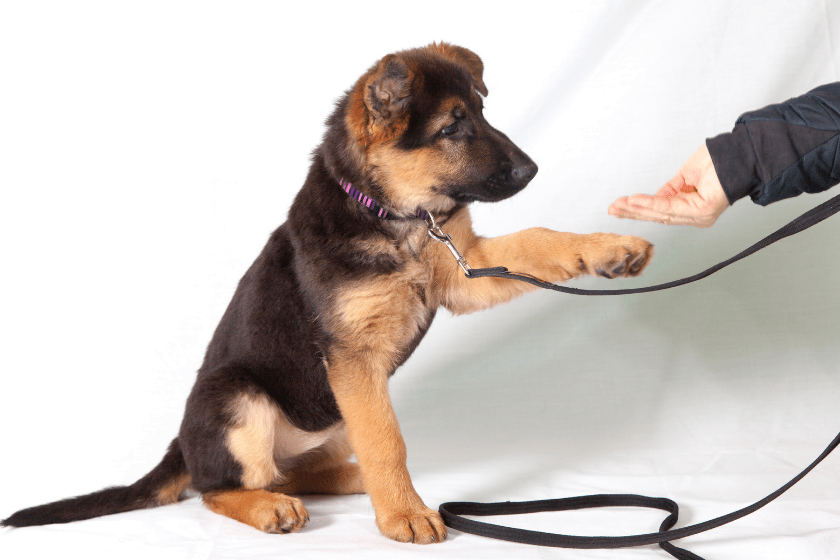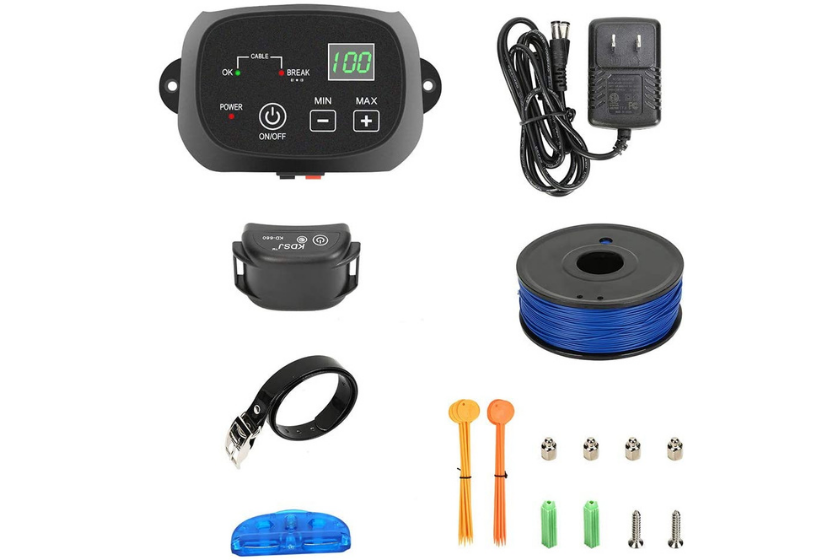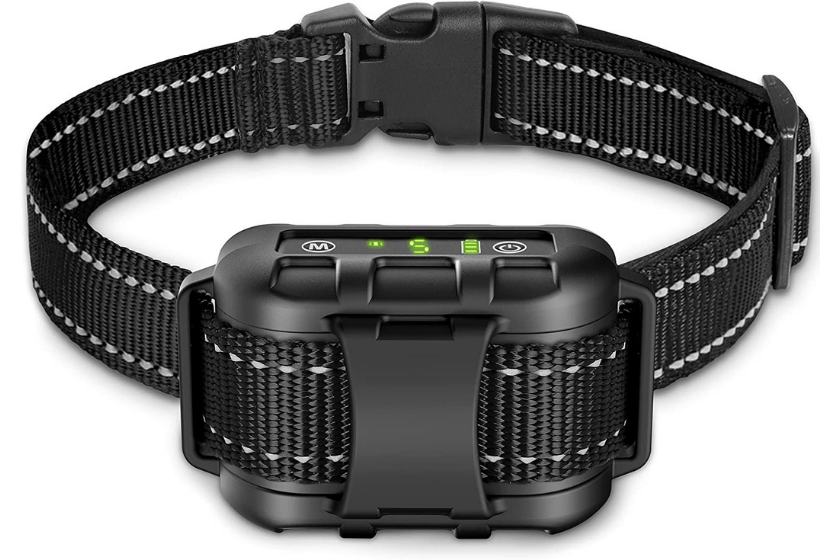Unless you're a professional dog trainer, correcting a dog's behavior or executing obedience training for the first time may be difficult, especially for new pet owners! Utilizing an electronic training collar around your dog's neck may help.
E-collars can be effective training tools when used properly. Leash training puppies successfully doesn't have to include an e-collar, but many other tasks might be more effectively handled with one.
Electronic collars or shock collars are a controversial method of dog training. Some claim they are torturous and unnecessary, and some claim, on the contrary, that they are not painful and are very effective training methods.
In this article, we'll look at the case for and against e-collars, and then provide some tips that you should follow if you're going to train your dog with an e-collar.
Cons of E-Collar Training

1. They cause pain and anxiety.
Some dog owners and trainers feel e-collars should not be used at all because they are designed to cause pain to the animal. There has been some research done which concluded that e-collars can increase aggression in dogs. Training a rescue dog, in particular, can already be fraught with challenges from anxiety, making e-collars not well suited for them.
2. They're ineffective.
Some also argue that shock collars are not an effective method of training because they provide negative stimuli, and positive stimuli are more effective when training a dog.
3. They're a training shortcut.
Some trainers argue that people only use e-collars because they are too lazy to go through a more time consuming, but more effective and kinder, training process.
Pros of E-Collar Training

1. They are no different from any other negative stimulus.
Dog trainers who use e-collars often argue that when used properly, a shock from an e-collar is no different from another negative stimulus, like a tug on the dog's leash.
Professional trainers who are in favor of shock collars believe there is no problem with using them, as long as they are used properly and responsibly.
2. The technology has much improved.
When e-collars were first invented, the shock level was not adjustable. However, the e-collars manufactured today have as many as 65 levels of stimulus.
The lowest levels usually can't even be felt by the smallest dogs, and the shock can easily be set to a working level that is annoying, but not painful.
3. For certain dogs, they are more effective.
Trainers who use e-collars often claim that certain dogs respond much better to a stimulus from a shock collar than they respond to another negative stimulus like a tug on a leash.
How To Train Your Dog With Training Collars

If you do decide to use an e-collar, here are some tips that you should definitely follow, so that you can train your dog effectively without causing him any pain:
1. Do not use the e-collar as your only training tool.
There is actually a lot of evidence that positive stimuli are more effective than negative stimuli when training dogs. Reward your dog with treats when he performs the correct behavior, teach him the meaning of the word "no," and try to punish negative behavior with verbal commands.
You will probably only need to use the e-collar for certain dog behaviors, like training your dog not to go into the street, leash aggression, not to bark at the mailman, or other unwanted behaviors, for example.
2. If your dog is aggressive, don't use an e-collar.
If at first you are training without the collar, and your dog becomes aggressive when scolded, he is probably not going to respond well to a shock, even if it is set at a low level. Aggressive dogs usually don't do well with negative reinforcement and high levels of shock.
3. Buy the collar that best suits your needs.
There are three different types of e-collars: containment systems, bark collars, and obedience collars.
Containment systems and barking collars will deliver the stimulus automatically when the dog does the behavior he is not supposed to do. Obedience collars have a remote (i.e. a remote training collar), so the trainer can control the stimulus.
4. Find a comfortable shock setting for your dog.
The key when using an e-collar is to find the level of stimulus which will make your dog pay attention, but not cause him pain. When you press the button, your dog should perk his ears up or turn his head, as if to say "What was that?"
If your dog yelps, or puts his tail between his legs, the shock is too strong. Buy a collar with a high number of stimulation levels so that you can choose a level that the dog can feel it but won't hurt him. You can hold the collar in your hand to test the vibration levels.
5. Buy a collar that beeps.
Most e-collars give you the option of delivering a beep along with the shock. If your dog learns to associate the beep with the negative stimulus, you might be able to control the negative behavior by just giving the beep without the shock.
6. Put the remote in your pocket or behind your back.
If your dog learns to associate the remote control with the shock, he will start to be afraid of the remote control and might become aggressive towards it, rather than learning that his negative behavior is the reason he is experiencing the negative stimulus.
Choosing the Right E-Collar for Your Dog
TTPet Electric Dog Fence
Dog Bark Collar Rechargeable
If you do decide to use electronic training, the most important thing to remember is to use the collar responsibly. Most collars you can buy come with training videos which are helpful. You can also buy dog training books. If books aren't your thing, you can buy training DVDs on Amazon to help you learn how to use them correctly. Also note that some dog breeds need different reinforcement and that some working dogs, like hunting dogs, can benefit from these types of training devices. Another option for training includes clicker training, which has its own set of pros and cons.
E-collars do have the potential for abuse, but when used properly, e-collars can be a very effective dog training tool.
Do you use an e-collar for your dog? Tell us on the Wide Open Pets Facebook page.
This article was originally published December 6, 2018.
Editor's Note: Products featured on Wide Open Pets are independently selected by our editors. However, when you buy something through our links, we may earn a commission.







